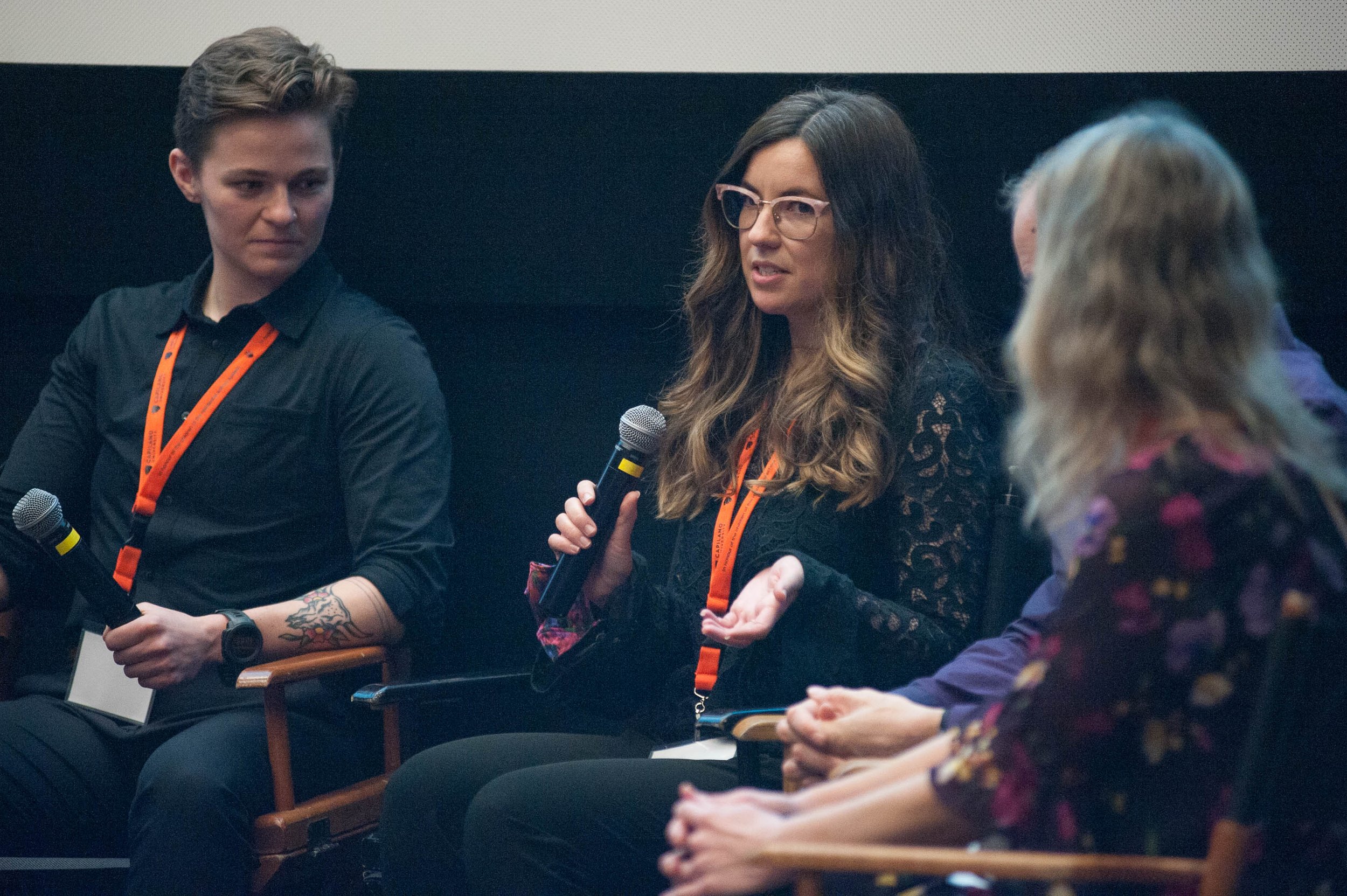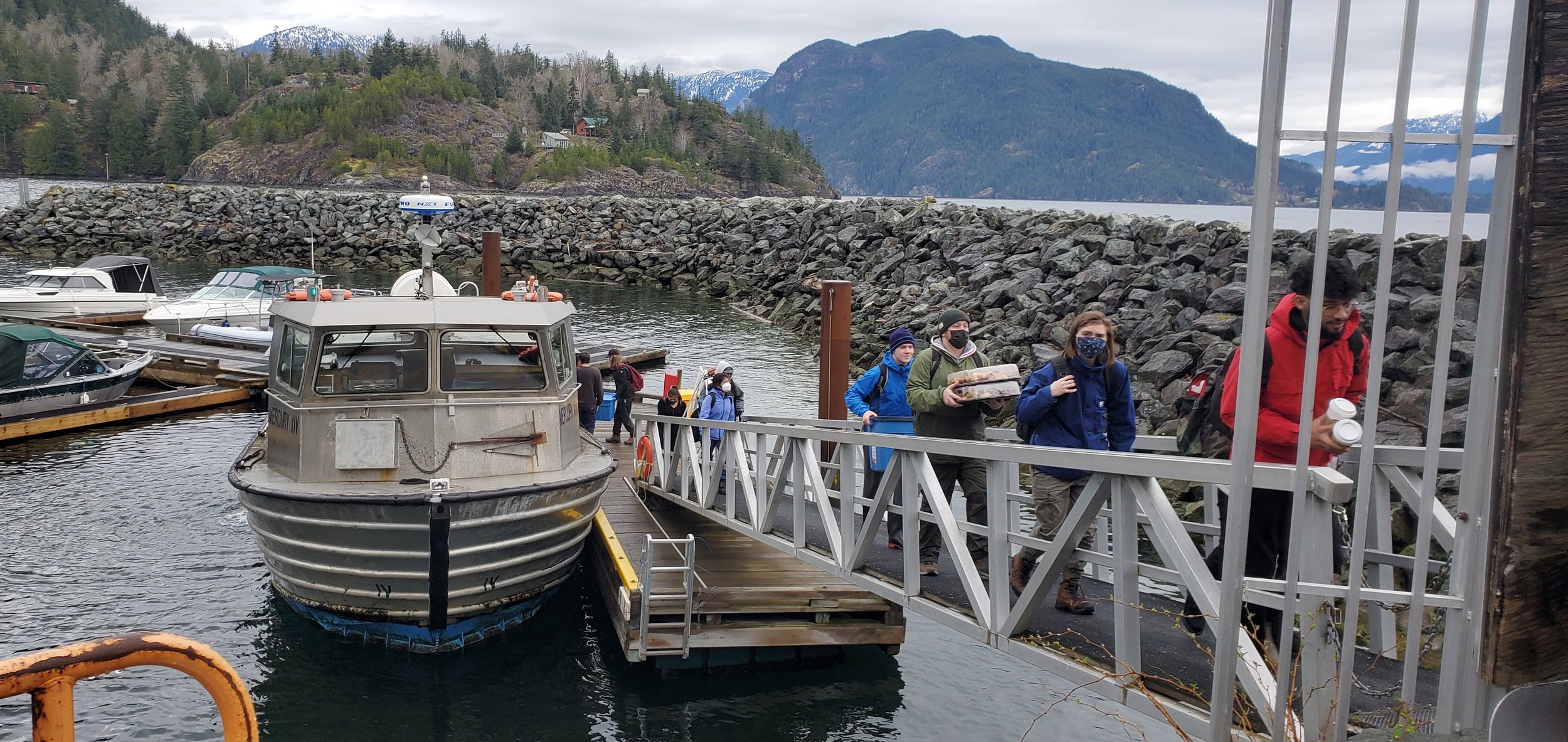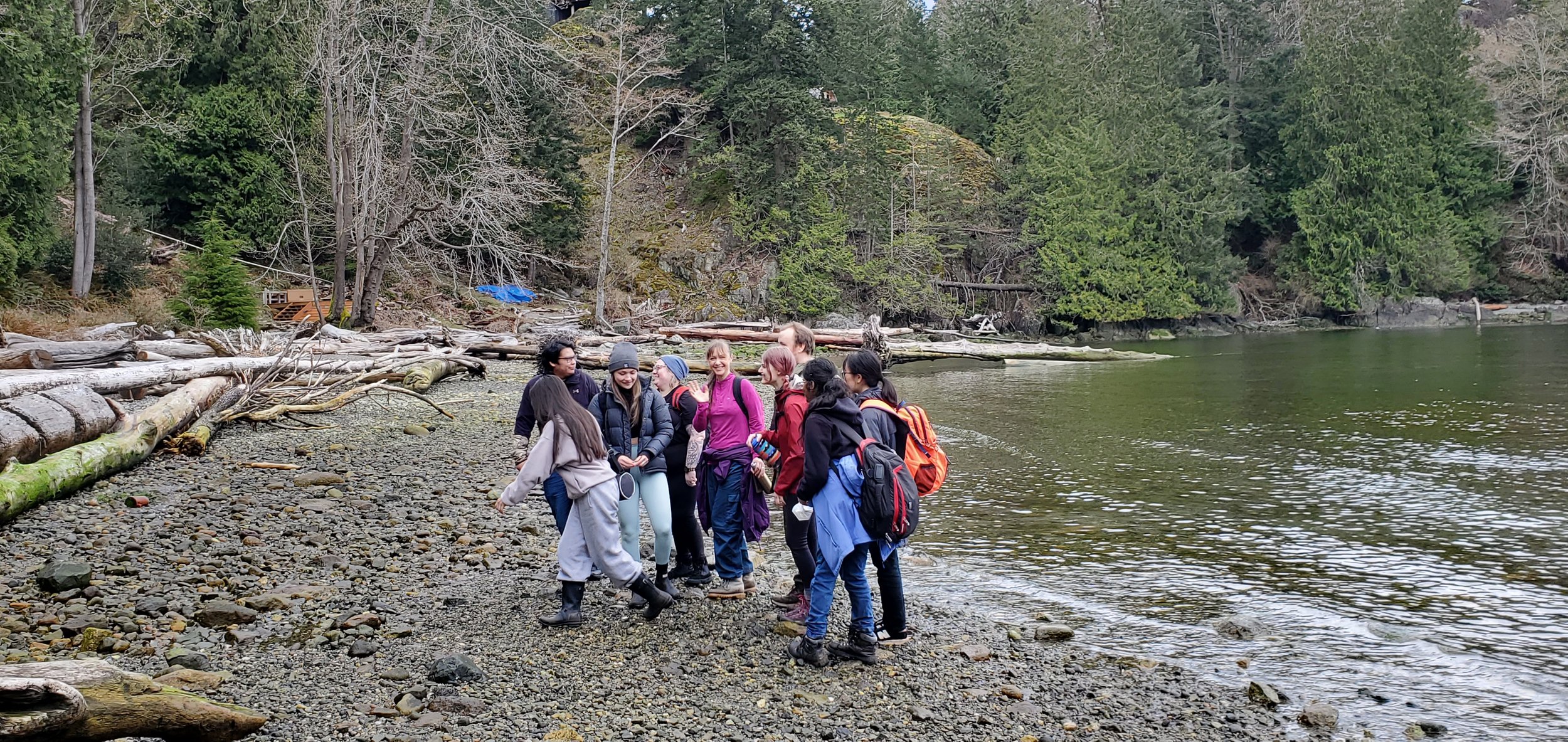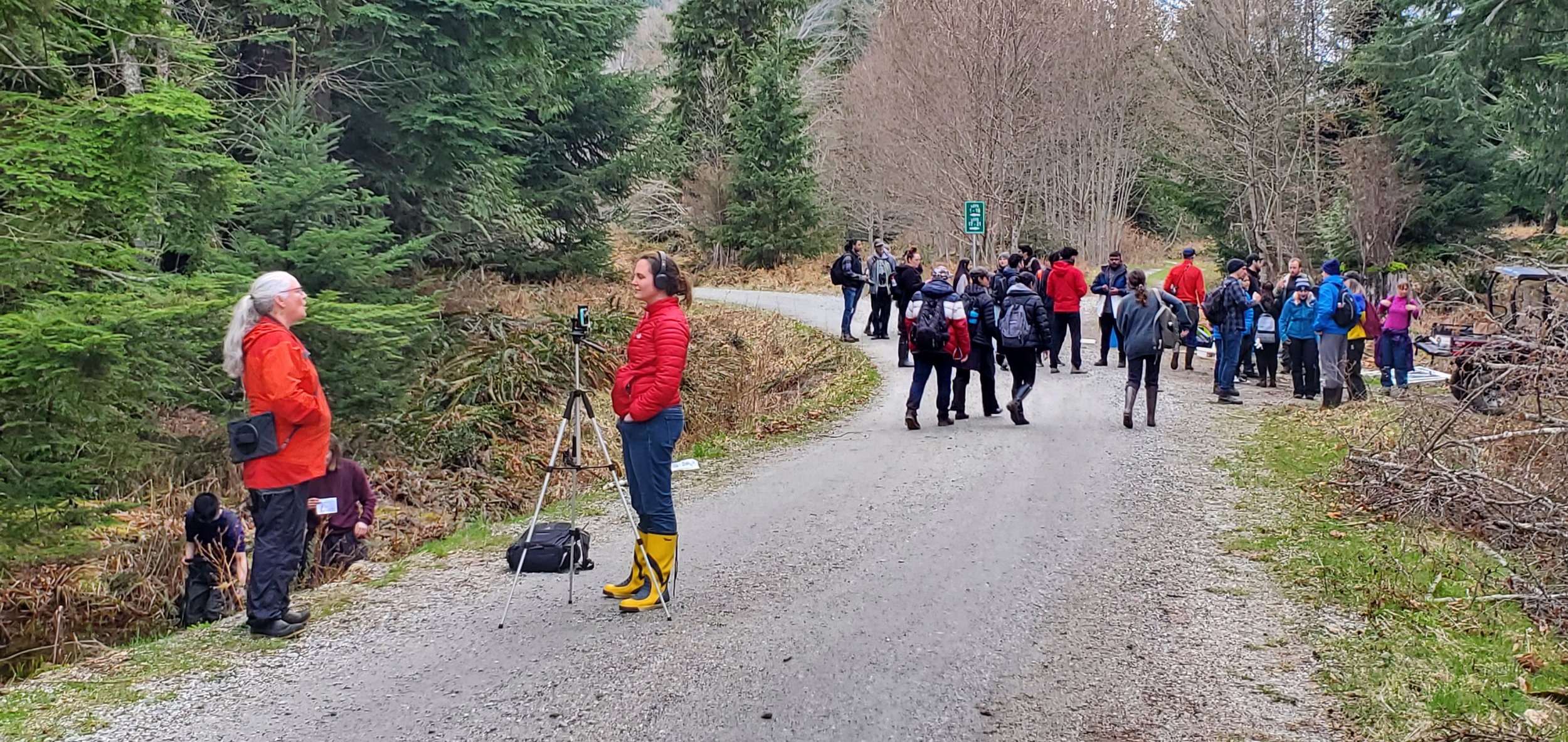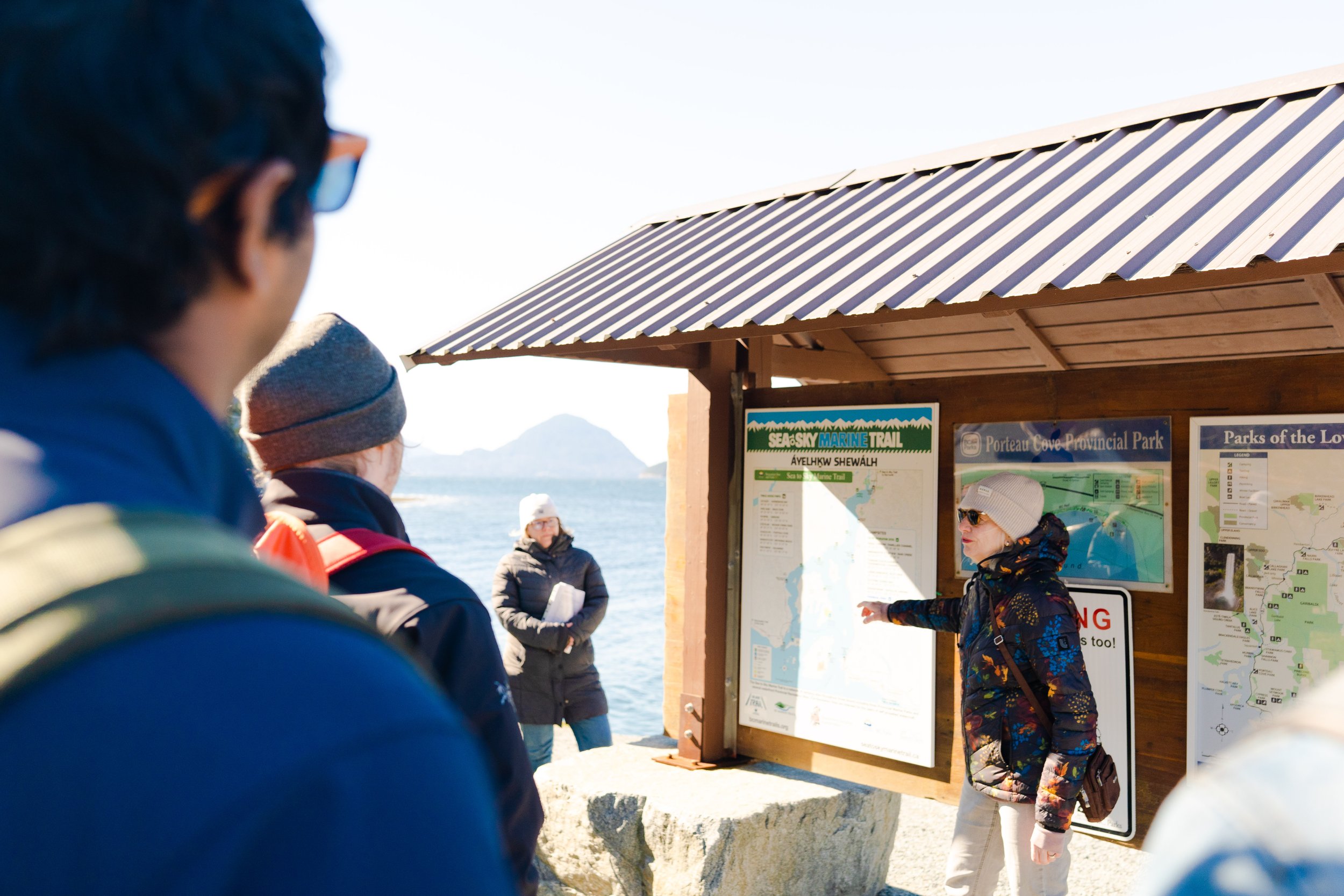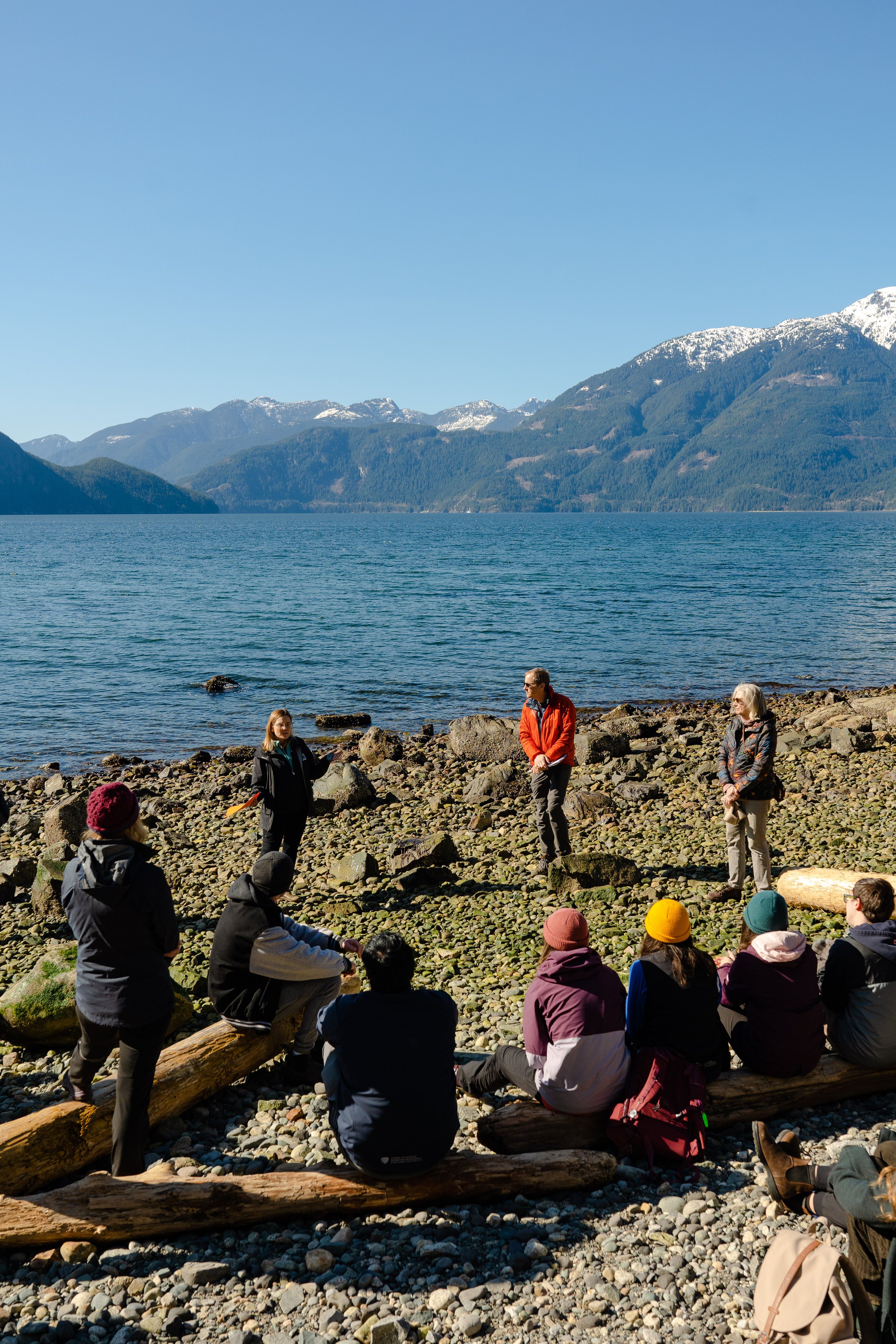Connecting Youth to Nature and Community
Connecting youth with nature is a key goal for UNESCO Biosphere Regions and community-based learning is an objective for Capilano University. Working together we are seeing the results for students and instructors. Over the winter and spring months, several Howe Sound-focused projects connected students with local organizations that contribute toward biodiversity conservation and sustainable development. Projects teams were out in the region collecting information, meeting with knowledge holders and learning about various challenges.
One of the research projects with help from a MiTACS grant looked into the forest sector. The end result of this project will be a first time ever compiled list of forest sector operators in the Howe Sound region and a snapshot of how the sector is contributing toward the UN SDGs and some common challenges.
A similar project is focused on the outdoor recreation and tourism sector. Both result in gaining a better understanding of the sector’s relationship to the UN SDGs and where the challenges exist.
Biology students travelled to Gambier Island to conduct monitoring in the nature reserve wetlands in collaboration with the Islands Trust Conservancy and Gambier Island Conservancy. This work contributes toward species at risk monitoring. Encouraging interdisciplinary approaches, the field trips were an opportunity for mathematics and statistics students, including University One Indigenous students to gain inspiration on the creative use of statistics to express science.
Marine Tourism students took a trip up the Sea to Sky highway, stopping at the Cultural Journey’s kiosks and at Porteau Cove as they explore ideas for interpretive signage. Community connections and learning from professionals at Red Rock Creative and BC Parks and HSBRIS supported the instructor as they contemplated how to best interpret the nature of the region to visitors.
More projects are in the planning stages. If you have a wicked problem in Howe Sound, contact us and we can help to make the connections.
Capilano University is named after Sa7plek (Chief Joe Capilano), an important leader of the Skwxwú7mesh (Squamish) Nation of the Coast Salish Peoples. They respectfully acknowledge that our campuses are located on the territories of the LíỈwat, xʷməθkʷəỷəm (Musqueam), shíshálh (Sechelt), Skwxwú7mesh (Squamish) and SəỈílwətaʔ/Selilwitulh (Tsleil-Waututh) Nations.
Read this exciting news about the University’s commitment to delivering high-quality post-secondary education in Squamish.

